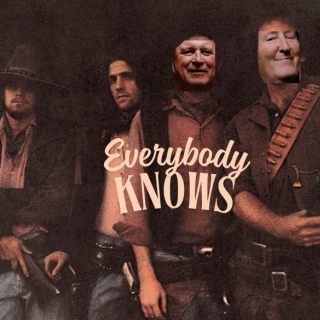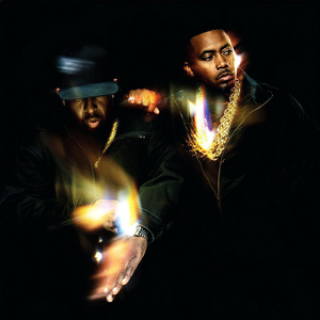Advertisement
Great Jazz Albums
This spring herald's the 50th Anniversary of arguably the greatest Jazz album ever released. I don’t write these words lightly. There are many contenders.
“Kinda Blue” by Miles Davis (Columbia Records, 1959) hits every short list. Certified as quadruple platinum, it is the best selling Jazz album of all time. “Giant Steps” (Atlantic, 1960) is another challenger. Blistering arpeggios, known as “Sheets of Sound,” rise and fall faster then hummingbirds wings. The title track from “Giant Steps” is the quintessential study piece for Jazz improvisation. Modern enthusiasts claim that the newly discovered “John Coltrane & Thelonious Monk At Carnegie Hall” is equally worthy of consideration. In 1957 a Thanksgiving Jazz benefit was held for the Morningside Community Center in Harlem. Performers included Ray Charles, Billie Holiday, Dizzy Gillespie, John Coltrane and Thelonious Monk. This live recording lay hidden in the Library of Congress till being discovered, restored and finally released by Blue Note Records in 2005.
Only one musician has played on all three albums named above . . . and created a work even more sublime and mystical. . . The artist is John Coltrane. The album is, “A Love Supreme.”
Early Life
John Coltrane was born in Hamlett, North Carolina in 1926. His father (John Robert Coltrane), an accomplished string musician, died when John was 13. His mother, Alice Blair Coltrane sustained the family, purchased his first saxophone and encouraged him to study music at William Penn High School, Ornstein School of Music and Granoff studios. Like her husband, Alice was also a musician and played piano. After a short stint in the Navy, John Coltrane melded into the emerging Bebop scene in Philadelphia and New York mentored by and working with Jazz legends like Dennis Sandole, Eddie “Clean Head” Vinson and Dizzy Gillespie.
Development and Demons
From 1948 thru 1957 John Coltrane collaborated extensively with Thelonious Monk and Miles Davis. They challenged him to expand his improvisational technique. His style developed into what was named “Sheets of Sound.”
Arpeggios are chord progressions where every note is played individually. Coltrane’s skill was such that he could play up to a thousand notes per minute while smoothly riding modal scales. Coltrane’s work with Miles Davis on “Kinda Blue” and his groundbreaking album “Giant Steps” contain definitive examples of this technique.
During this time John Coltrane struggled with heroin addiction, cocaine abuse and alcoholism. Drug dealers in Philadelphia & New York, like those in Columbus, always surround musicians, artists and the social avant garde seeking to gain financial benefit from those who fall. In the midst of a stellar career, Coltrane fell hard, most probably contracting hepatitis from shared intravenous needles and/or cocaine straws. Long term hepatitis infection, asymptotic till the end, is believed to have been the cause of liver cancer that took his life on July 17th, 1967 at the age of 40. It would be easy enough to leave the story there, except for the fact that after addiction and before death came his greatest work.
Recovery and Awakening
In the liner notes to “A Love Supreme” John Coltrane writes of a religious awakening that empowered him to turn away from substance abuse and back to music from which we drew his greatest strength and satisfaction.
“During the year 1957, I experienced, by the grace of God, a spiritual awakening which was to lead me to a richer, fuller, more productive life. At that time, in gratitude, I humbly asked to be given the means and privilege to make others happy through music. I feel this has been granted through his grace. All Praise to God.
“As time and events moved on, a period of irresolution did prevail. I entered into a phase which was contradictory to the pledge and away from the esteemed path; but thankfully, now and again through the unerring and merciful hand of God, I do perceive and have duly re-informed of his omnipotence and of our need for and dependence on Him. At this time I would like to tell you that No Matter What, it is with God. He is gracious and merciful. His way is in Love, through which we all are. It is truly A Love Supreme.” - John Coltrane
Coltrane’s faith was informed by those whom he loved. His maternal and paternal grandfathers were respectively Presiding Elder and Minister in the A.M.E. Zion Church (African Methodist Episcopal Zion Church) one of the oldest historic black churches in America. His first wife Namia was a practicing Muslim. He devotes a track specifically to her on “Giant Steps.” His second wife Alice, a highly accomplished musician and bandmate shared his interest in Indian mysticism.
“A Love Supreme” is an ode to God not specific to any denomination.
The Band
“A Love Supreme” was recorded by the John Coltrane Quartet in one session on December 9, 1964. This in itself is a notable accomplishment and speaks to the integrated musicianship of a band comprised of :
John Coltrane: Tenor Sax, Vocals, Bandleader
Jimmy Garrison: Acoustic Standup Base (aka Double Bass)
Elvin Jones: Percussion (Gong, Timpani, Drums)
McCoy Tyner: Piano
The URL below links to an historic 12 minute film from 1964, directed Jean Christophe Averty. It is the only known live recording of the John Coltrane Quartet, playing “A Love Supreme.”
https://www.youtube.com/watch?v=_qt435yF2Qg
The Album
“A Love Supreme” was released in February of 1965 by Impulse records. The four tracks in the Suite are named: Acknowledgement, Resolution, Pursuance & Psalm.
Acknowledgment: Listen to the first three seconds as many times as it takes until you distinctly hear the gong. A Tenor Sax, the primary narrator of the Suite, lilts gently above tapping cymbals. The Piano pauses long enough to allow the Double Bass to begin its four note chant as Tenor Sax, Piano and Percussion return. Toward the end of “Acknowledgement” Coltrane plays the four note chant (A’ Love’ Su’ Preme’) in all 12 keys. Shortly after we hear Coltrane, with double or triple tracked vocals, sing “A Love Supreme, A Love Supreme, Allah Supreme, Allah Supreme.” The Double Bass ends “Acknowledgement” playing variations on the 4 note chant (A’ Love’ Su’ Preme’).
Resolution: The Double Bass opens with a quiet riff, followed by the Tenor Sax that sails effortless up and down modal scales. At 1:49 the Piano enters confidently, extending the musical conversation before exploring its own up tone and down tone range. At 3:55 Tenor Sax returns exploring both shrills and scales. Gentle percussion and cymbals end “Resolution.”
Pursuance: Percussion and cymbals return to introduce “Pursuance.” A drum solo extends till 1:31 when the self-assured Tenor Sax returns. From 2:00 till 4:17 the Double Bass and Piano converse. Double Bass is fast and steady. Piano is expressive. Tenor Sax and Percussion join then yield as “Pursuance” ends with an exploration of Double Bass tones.
Psalm: This final track is a musical elocution of the John Contrane poem, “A Love Supreme” that is found in the liner notes. The spoken words of the poem are represented by the musical notes of the tenor sax. Read the poem. Then listen to song. Then do both at the same time. Elation. Elegance. Exaltation.
Other Sources
A Podcast of “A Love Supreme” will be available for download on WCRS 98.3 / 102.1 FM - Big Barking Dog Alternative Radio on Thursday April 16th.



